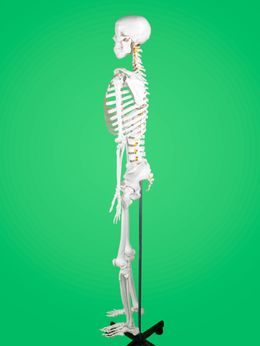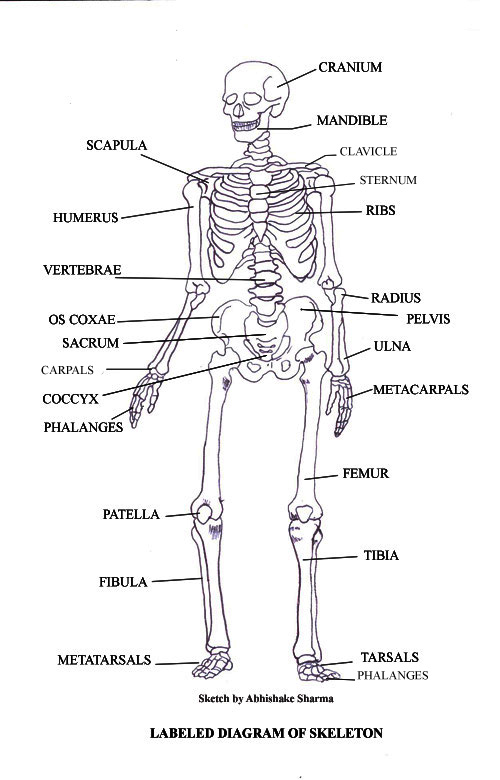This Buzzle post has detailed information on the human skeletal system, along with a simple diagram, which will help you learn and understand human anatomy.

A child is born with close to 300 bones. However, as he grows up, the bones fuse together and an adult human skeletal system consists of 206 bones. Given below is a labeled diagram, and tips to help you draw and memorize the names of different parts.
Human Skeleton Diagram
Here is a detailed diagram which shows the various bones present in an adult skeletal system. There is a little difference between the male and female skeleton, but for diagrams mostly a male skeletal system is considered.
 Memorizing the Diagram
Memorizing the Diagram
Take a good look at the above diagram. If you wish to memorize it, to be replicated during an examination or a test, then there is no other way than to practice drawing it couple of times. You can use some forms to make drawing the skeleton easier. For example, for a skull you can use an oval, for the chest or ribs you can use a rectangle, then for the pelvis you can use a triangle, and small cylinders can be used to draw hands and legs. Once you have drawn these outlines, you may sketch the detailed shapes of the various bones. This will make your drawing look proportionate. You can stick a labeled diagram on a wall in your room, so you can see it many times a day, in order to memorize it better.
Remembering the Names
Memorizing all the scientific names of the skeletal system can be difficult. As you can see in the above diagram, there are around 24 labels, and forgetting one of them is quite possible. To avoid this, here is a trick I use to remember the names of the bones. Firstly, divide the skeleton into small groups―the skull, the chest and back, the hands, the pelvis, and lastly, the legs.
To remember the names of skeletal system parts, always go from top to bottom. To remember the name of the skull parts remember the initials C and M, which are for cranium and mandible. For full hands remember S, H, R, U, C, M and P which are for scapula, humerus, radius, ulna, carpals, metacarpals and phalanges. To remember the name of the chest and back bones, remember C, S, R and V which are for clavicle, sternum, ribs and vertebrae. For pelvis bones names, use P, O, S, and C which stand for pelvis, os coxae, scarum and coccyx. Finally to remember the bone part names for legs, use F, P, T, F, T, M and P; which are for femur, patella, tibia, fibula, tarsals, metatarsals and phalanges.
If you wish to use the above diagram for practice, then click here for a blank skeletal system diagram to label. On this blank diagram, practice writing the appropriate names of the various skeleton parts. Do this couple of times, using the above tip to memorize the names of the bones.


 A child is born with close to 300 bones. However, as he grows up, the bones fuse together and an adult human skeletal system consists of 206 bones. Given below is a labeled diagram, and tips to help you draw and memorize the names of different parts.
A child is born with close to 300 bones. However, as he grows up, the bones fuse together and an adult human skeletal system consists of 206 bones. Given below is a labeled diagram, and tips to help you draw and memorize the names of different parts.